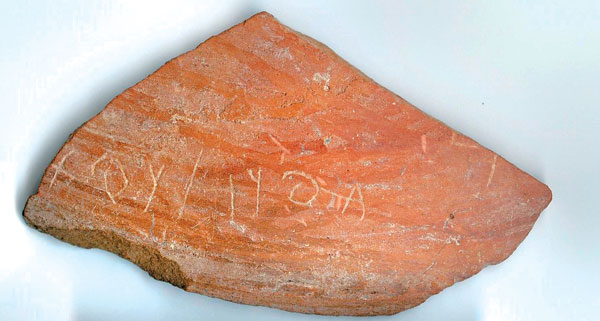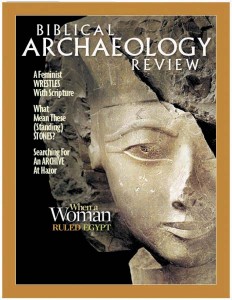Strata: New Finds
Gath Inscription Evidences Philistine Assimilation

The oldest Philistine inscription ever discovered was recently excavated in Goliath’s home town of Gath (Tel es-Safi) by an expedition headed by Aren Maeir of Bar-Ilan University.
The inscription was scratched with a needle-like instrument on a small potsherd and dates from the tenth to mid-ninth century B.C.E. Of the two names on the sherd, the first consists of four Semitic letters:
Maeir stresses that the Goliath of the inscription from Gath is not the Biblical Goliath. Most scholars regard the Goliath story as legend rather than history. The inscription does, however, give a real-life context to the story, and it demonstrates that the name Goliath was probably in circulation in Gath about a century or so after the legendary battle between David and Goliath, according to the Biblical chronology.
Already a library member? Log in here.
Institution user? Log in with your IP address.

